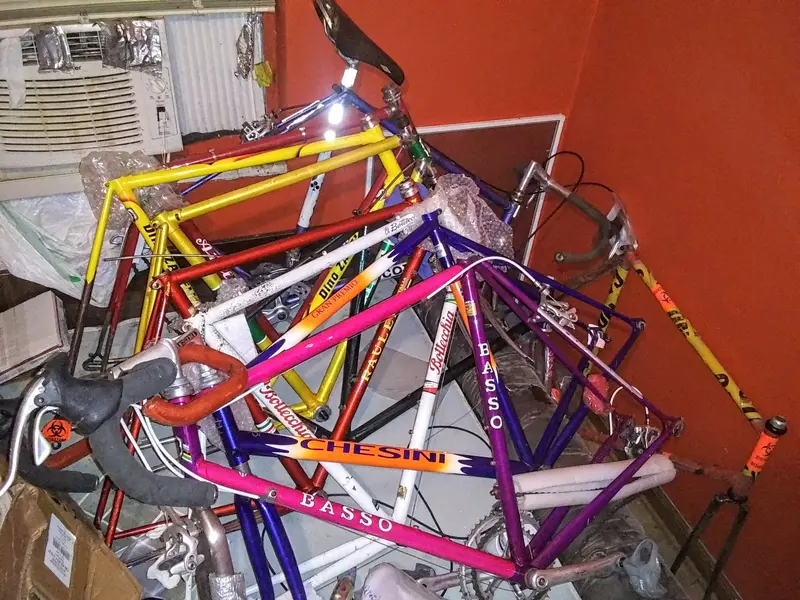I don't mean to say that ovalizing is bad. Sometimes it's great, like the oval at the bottom of a seat tube, definitely an easy win for more of the right kind of stiffness without extra weight. But I think Max has ovals where they don't make good sense.
It's just a fact of physics that ovalizing a round (cylindrical) tube increases the bending stiffness (in one plane only), while
reducing the torsional stiffness. Any shaping you do on to a round tube reduces torsional stiffness because thinwall round is the most efficient shape for torsion, proven mathematically and by empirical measurement.
So, what are the ovals for in a Max toptube? Even the builders who use it can't agree, with some of them orienting the oval side-to-side at the back (seat cluster), some orienting it side-to-side at the front (HT). Neither end of a TT ever sees any side-to-side bending from riding, not enough to mention anyway, so there should never be a side-to-side oriented oval at either end.
The Max DT has a side-to-side oval at the BB, which is defensible since there is side-to-side bending there. But I believe the important load on a DT is torsional, so it should be left round. Definitely debateable though. What's less debateable IMHO is the up-and-down oval at the HT. Yes it increases strength, less likely to bend back in a crash, but are we building them for crashing or for riding? For riding, that reduces torsional stiffness, with no corresponding advantage, in fact it makes the frame harsher when hitting bumps — less in-plane "give" to reduce shocks and road buzz.
Chainstays too, the oval at the BB shell is all downside with no advantage. Chainstays do see bending
and torsional loads, but the oval in Max stays is oriented exactly wrong for resisting that bending load. The only sensible oval at the BB shell would be a side-to-side oriented oval, which of course no one does. The oval at the tire and chainring clearance point makes sense, which is why 531 and do many other tubesets went to round-oval-round (ROR) for chainstays. Round for as much of the length as possible, for torsion, just a little oval where needed for clearance.
That's why on my racing tandem I used Max chainstays, but I reshaped them back to round at the BB shell, leaving a little oval for clearance, classic ROR with a smooth but fairly rapid transition from the round at the BB to the oval right where the tire needs it. The Max stays are huge, 1-1/8" when re-rounded, the largest steel chainstays I have ever seen. I built a lot of tandems and Match Sprint track bikes, so I was always looking for stiff chainstays. Nothing else came close, with 1" (25.4 mm) being the next-largest stays I ever saw. 24 mm was the traditional "oversize" chainstay for Match Sprint, but they look puny next to a Max.
But knowing what I know about chainstay loads, no way I'd ever make a frame with the stays oval up-and-down at the BB shell, that would be admitting defeat, for me.
I'll admit, all this theoretical engineering analysis is nothing compared to going out and riding, and there are plenty of Max frames out there that ride GREAT. Max was the first example of what has become the new normal in steel frames, with everyone going huge diameters with super thin walls. So it's historically interesting as the harbinger of a new age of steel. Just not for me since I like a bit more give in the frame, Max is too stiff for me. And I'm big and heavy with a strong sprint as my forte (or I should say "was", back when I was racing). Most people don't need a frame as stiff as what top pro sprinters ride, but if the Walter Mitty fantasies make riding fun for you, it would be churlish of me to take that away from you.

